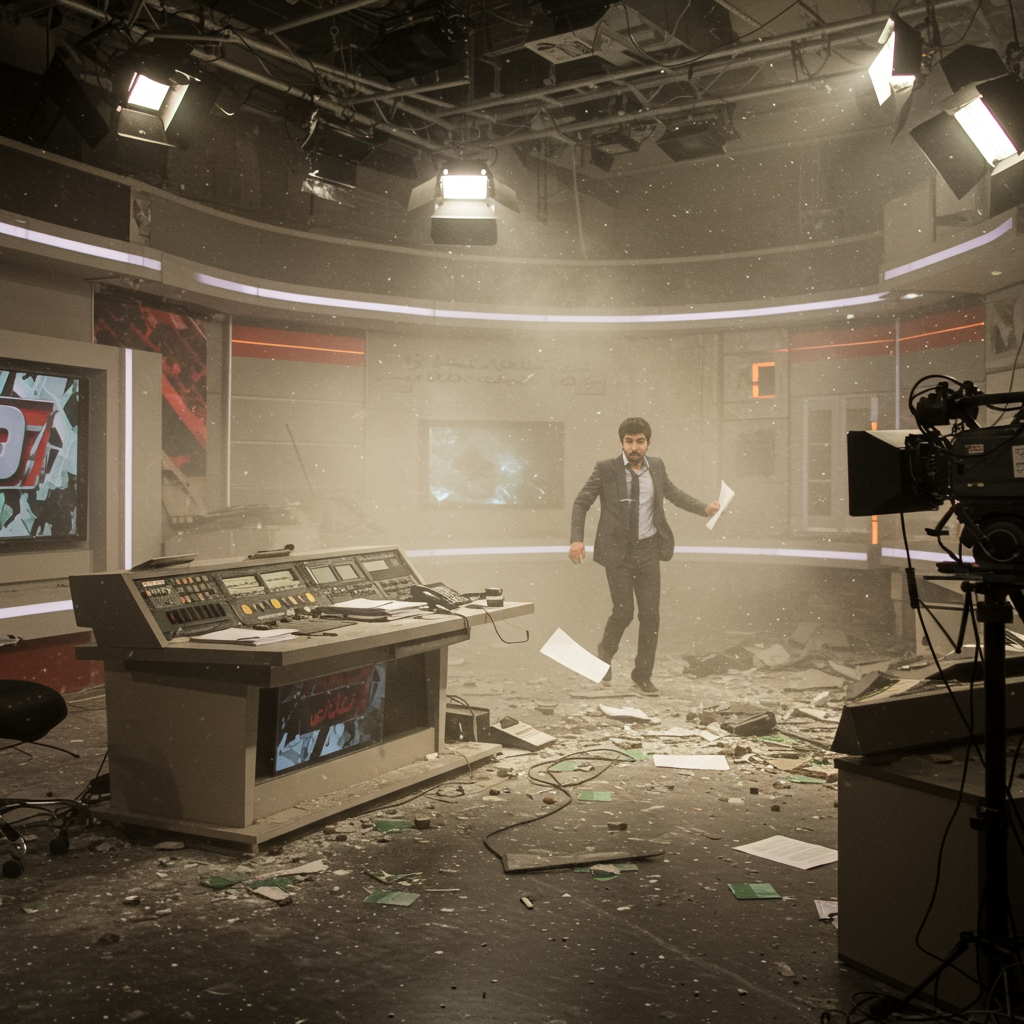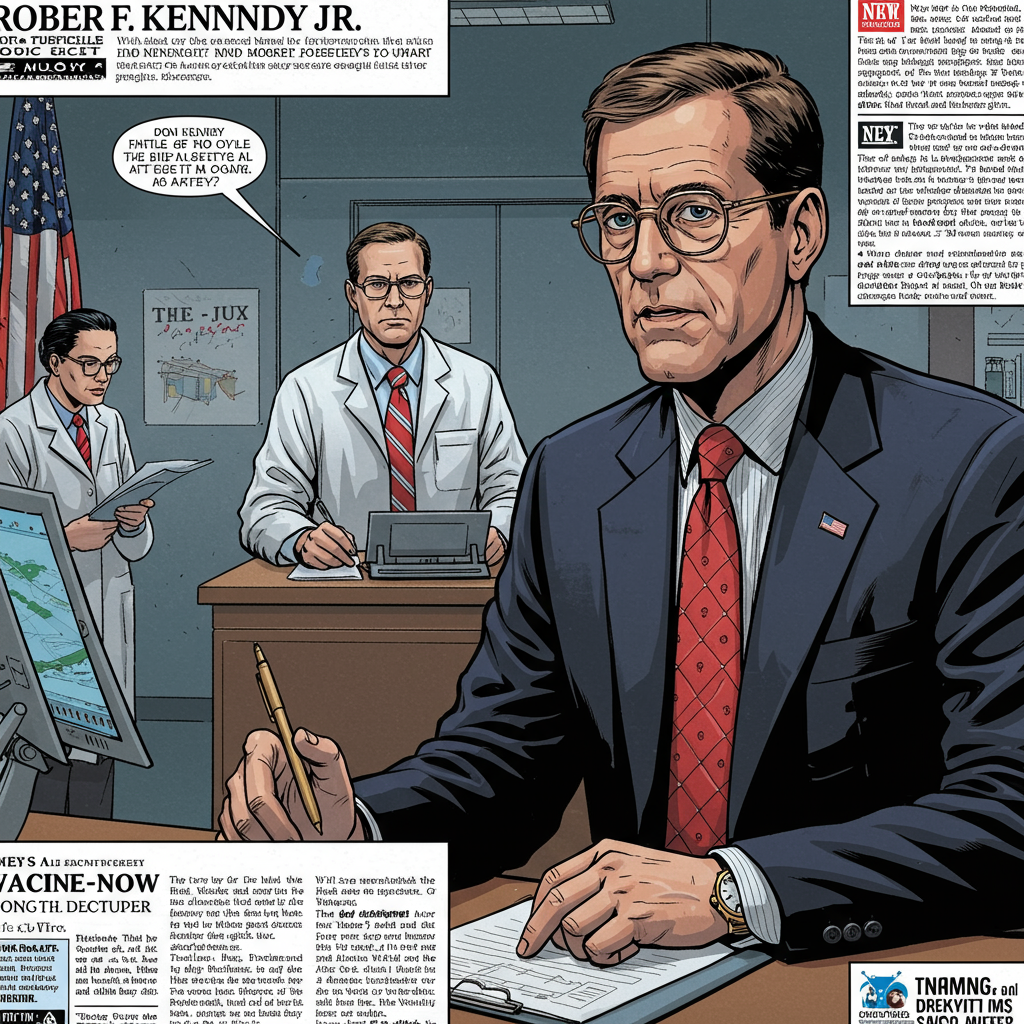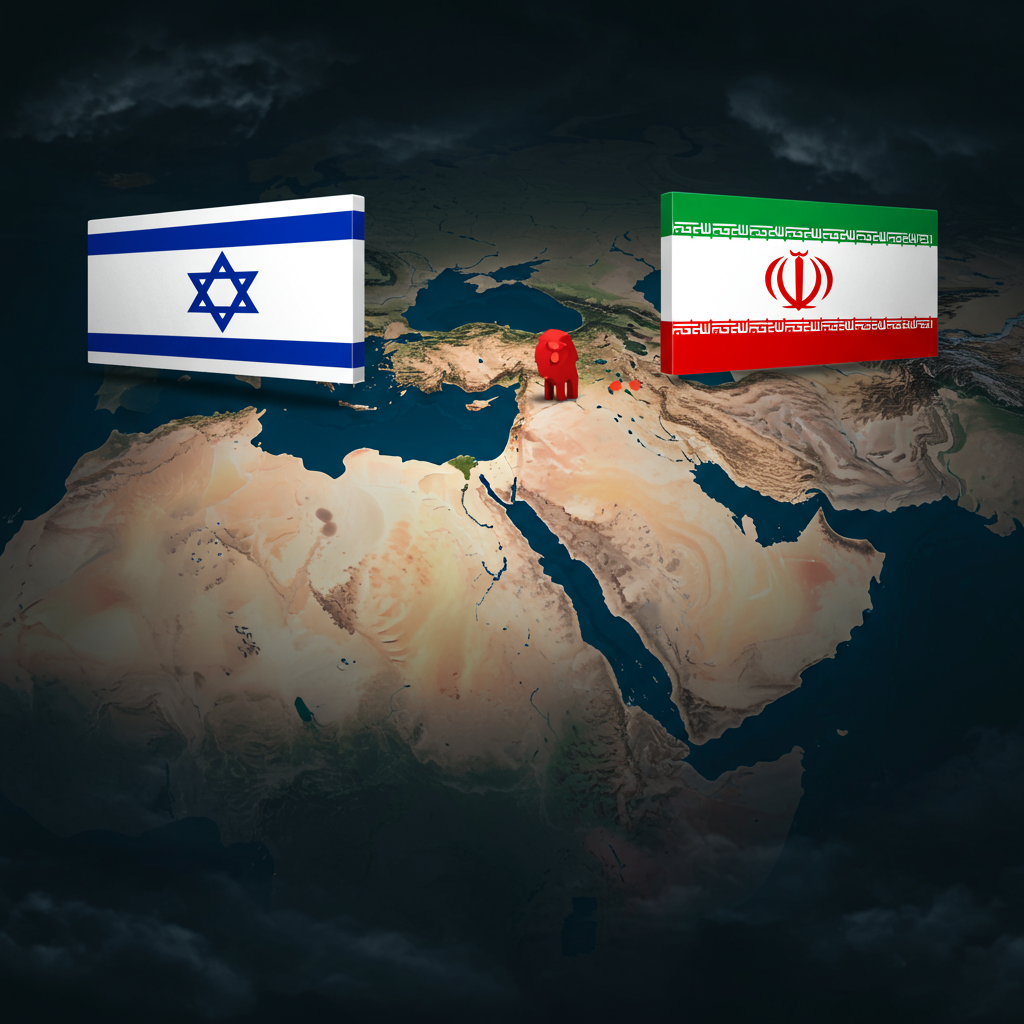Conflict Escalates: Israeli Strike Hits Iranian State TV During Live Broadcast
In a dramatic turn in the escalating conflict between Israel and Iran, an Israeli strike targeted Iran’s state-run television station in Tehran during a live broadcast. The unexpected attack sent shockwaves through the studio, forcing a reporter on air to flee as the room filled with dust and debris.
The strike, reported by Iranian state media, caused the channel’s broadcast to abruptly cut away to prerecorded programming. While initial reports from the network stated a few colleagues were injured, some Iranian media outlets later reported specific news staff had died from injuries sustained in the bombing. The station confirmed its building was hit by multiple bombs.
Israel claimed the state TV station was being used to provide cover for Iranian military operations and justified the strike as part of its broader air campaign. Notably, Israeli forces had reportedly issued a warning hours before the strike, advising hundreds of thousands of residents in a central Tehran district – which includes the TV headquarters, police stations, and hospitals – to evacuate the area. This tactic has been compared to similar evacuation warnings Israel has issued to civilians in conflict zones like Gaza and Lebanon.
Wider Context: Intense Exchanges and Rising Casualties
The strike on state television occurred amid a period of intense military exchanges between the two regional adversaries, triggering fears of a potential all-out war. The conflict initially escalated when Israel launched what it described as a targeted assault on Iran’s top military leaders, uranium enrichment facilities, and nuclear scientists, aimed at preventing Tehran from acquiring nuclear weapons.
Israeli Prime Minister Benjamin Netanyahu stated that these strikes have significantly set back Iran’s nuclear program, claiming the Iranian regime is “very weak.” While he maintained Israel was not attempting to topple the government, he suggested such an outcome would not be surprising given the impact of the strikes. Israeli military officials have claimed air superiority over Tehran skies and reported destroying a substantial portion of Iran’s missile launchers, fighter jets, and command centers belonging to the elite Quds Force, calling it a “deep and comprehensive blow.” Assessments of damage at Iran’s Natanz nuclear enrichment facility show hit buildings and power loss, though the main underground centrifuge site appeared intact.
Iran vehemently denies pursuing nuclear weapons, maintaining its nuclear program is for civilian purposes. Iranian officials condemned the strike on state media as a “blatant war crime” and a “direct assault on press freedom.” Iran has retaliated fiercely, launching waves of ballistic missiles and hundreds of drones toward Israel.
These retaliatory strikes have resulted in significant damage and casualties in Israel, hitting residential buildings, leading to deaths in places like Petah Tikva, and causing fires and fatalities at critical infrastructure such as the Haifa oil refinery. Casualty figures have climbed on both sides, with officials reporting dozens killed and hundreds injured in Israel, while reports from Iran indicate hundreds killed (with rights groups suggesting a higher civilian death toll) and over a thousand wounded.
Trump’s Warning and US Involvement
Adding to the volatile situation, U.S. President Donald Trump issued a stark warning via social media, urging everyone in the Iranian capital to “immediately evacuate Tehran!” Trump reiterated his firm stance that Iran “cannot have a nuclear weapon” and criticized Iran for not signing a “deal” he had previously offered, suggesting it could have prevented the conflict. Amid the intensifying clashes, President Trump reportedly cut short his attendance at the G7 summit to return to Washington.
The United States has increased its military posture in the region, repositioning assets, and US warships have assisted in intercepting Iranian missiles targeting Israel. There are reports suggesting potential US diplomatic efforts, including a possible offer from Trump to negotiate a ceasefire and discussions about potential talks between a US envoy and Iran’s foreign minister regarding a nuclear deal and ending hostilities. However, Iran’s foreign minister has also suggested that a US directive to “muzzle someone like Netanyahu” could pave the way for diplomacy.
Regional Instability and Civilian Impact
The dangerous escalation has prompted international concern. G7 leaders issued a joint statement calling for de-escalation, reaffirming support for Israel’s right to self-defense, and labeling Iran a source of regional instability. They urged that resolving this crisis should contribute to broader de-escalation in the Middle East, including a ceasefire in Gaza.
The conflict has significantly disrupted air travel across the Middle East, stranding tens of thousands. Nations are issuing guidance to their citizens; India’s embassy in Tehran specifically advised all Indian nationals to relocate using their own resources due to fears of a large-scale attack. Other reported impacts in Iran include fuel rationing and arrests related to alleged espionage linked to Israeli operations. An incident near the critical Strait of Hormuz waterway has also been reported, adding to regional tensions.
As the exchange of strikes continues, fears persist that the situation could quickly spiral into a wider, devastating regional war.




